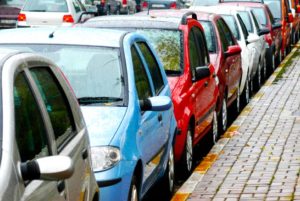
Reverse parking made easy
The reverse park is the one part of the driving test that makes you more nervous.
Even when you’ve got your Ps, reverse parking can be a sweaty-palmed trial. No-one likes the feeling of trying to squeeze into a gap between two cars while cranky motorists bank up behind you.
Here are some simple tips to avoid a dose of the reverse parking heebie-jeebies.
Put it in perspective
Reverse parking isn’t the biggest test of your driving ability.
It doesn’t matter if you’re the best reverse parker in the world, if you speed, forget to indicate and can’t pick a safe gap in the traffic, you’re never going to get your Ps.
The reverse park is one of the manoeuvres you’re expected to do when you go for your red Ps – the dreaded Driving Test.
This is probably why reverse parking has such a reputation – because you have to perform it under pressure.
But the reverse park is only one part of the Driving Test – even if you don’t do it perfectly, you can still pass the test (unless you do something like drive up the kerb or hit a car!).
The best advice from Roads and Maritime Services testing officers is to practise a lot before the test and then, on the day, keep it in perspective, stay calm and don’t panic if it doesn’t go well.
The same advice works on the road: stay calm and if it doesn’t work, well there’s always another parking space somewhere else.
The step-by-step guide
Here’s Geared’s step-by-step guide:
- Find a suitable space that you can safely get your car into.
- Slow down, indicate left, check your left blind spot and pull up alongside the car you are parking behind (you can keep your indicator on throughout the manoeuvre).
- When you pull up alongside the car you are parking behind, make sure there is about one meter between your car and the car next to you.
- Position the car so your car’s left passenger side mirror is in line with the driver side mirror of the car next to you.
- Shift your car into reverse gear, check all mirrors and blind spots.
- Turn the steering wheel anti-clockwise, and slowly begin to reverse your car. Continue to check the left passenger side mirror and the front left corner of your car while you are reversing to ensure you keep a safe distance between your car and the car in front.
- Continue reversing at an angle until your rear tyre (facing the kerb) is nearly as close as required to the kerb (this is roughly 30cm). If your tyre hits the kerb, this means you’ve gone too far. Put the car back into drive and move forward a few feet and try again. Also the rear end of your car should be around 30cm away from the front of the car behind you.
- As you finish reversing in, turn your steering wheel clockwise to straighten your front wheels.
- Finally, inch forward (making sure your front wheels are straight) to complete the parallel park.
The final turning point may need a little careful trial and error, but once you have that point established it never needs to be changed, and will become easier each time.
You should also do everything slowly to allow sufficient time to use each of the turning points exactly.
Just a helpful hint, rather than trying to learn to reverse park between two cars learn to reverse park behind one car first. Then when it becomes easier, you can move on to nailing the reverse park between two cars.
